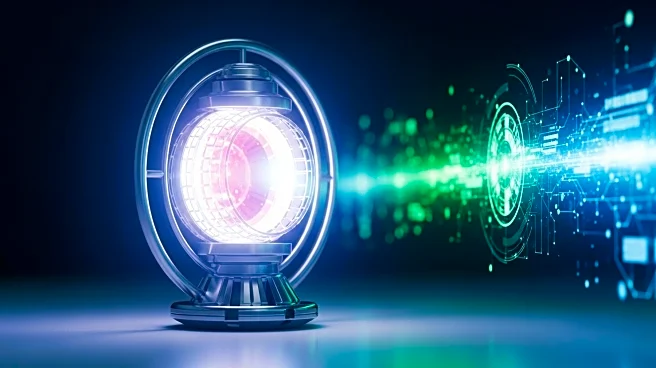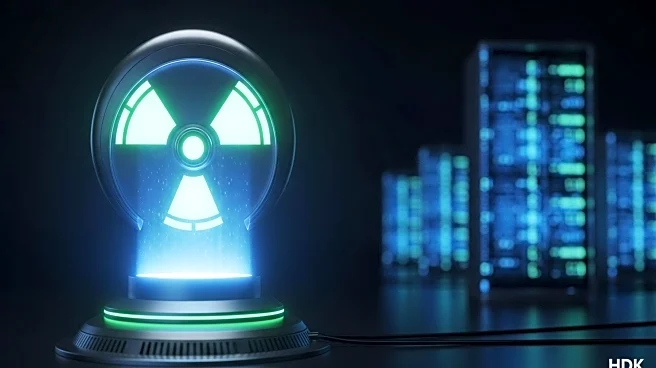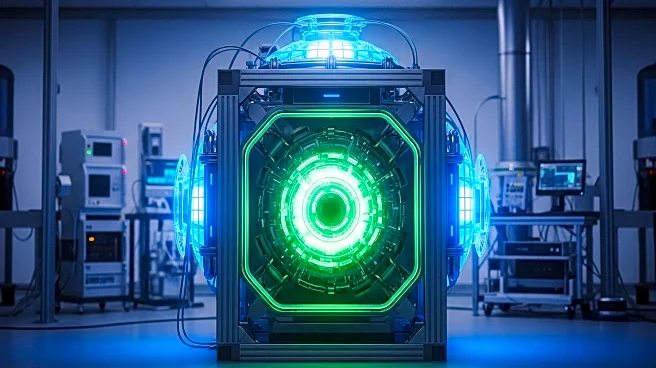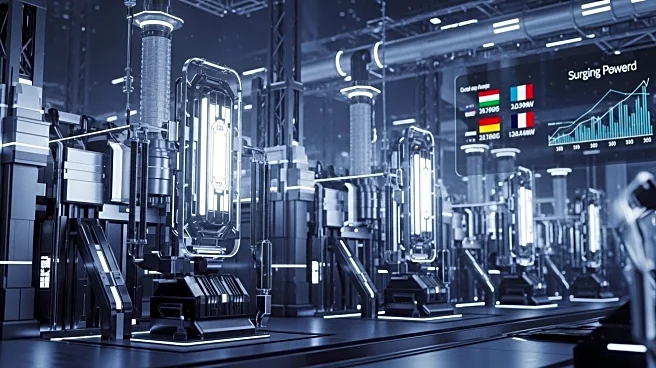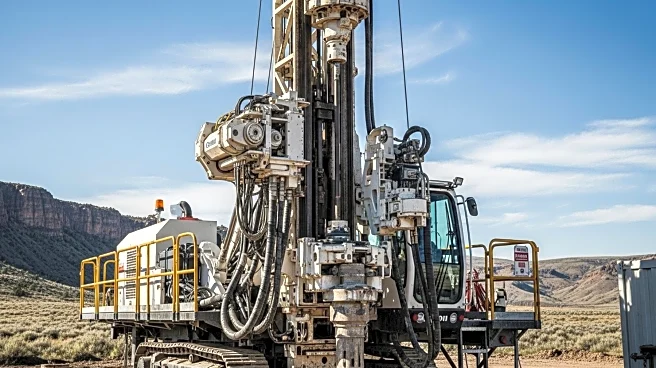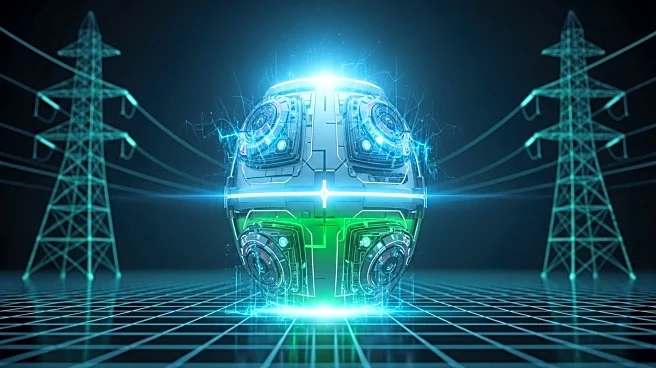What's Happening?
Nuclear energy is experiencing a resurgence in the United States, driven by the increasing demand for stable, low-carbon power to support the growth of data centers. This revival is marked by significant investments from tech giants like Microsoft and Meta, who have entered into long-term power purchase agreements to restart dormant nuclear facilities. The Three Mile Island plant, known for the worst commercial nuclear accident in U.S. history, is set to be revived as the Crane Clean Energy Center by 2027. This trend is fueled by the need to meet the surging energy demands of artificial intelligence and cloud computing, with projections indicating a 165% increase in power demand for data centers over the next five years.
Why It's Important?
The revival of nuclear energy is crucial for meeting the growing energy demands of the tech industry, particularly data centers, which are essential for supporting advancements in AI and cloud computing. This shift towards nuclear power offers a stable and low-carbon energy source, aligning with global climate goals. However, the transition involves overcoming significant challenges, including operational, financial, and workforce hurdles. The success of these projects could reshape the energy market by establishing a new financing model based on genuine market demand, potentially influencing future infrastructure projects beyond the tech sector.
What's Next?
The nuclear energy sector faces several challenges before it can fully capitalize on this resurgence. These include restoring operating licenses, meeting regulatory compliance, and addressing cybersecurity vulnerabilities. Additionally, the supply chain for uranium rods needs rebuilding, and there is a shortage of skilled nuclear power plant operators. Overcoming these obstacles will require sustained policy support, investment in workforce development, and patience to manage the inevitable delays and cost overruns associated with major infrastructure projects. The real test will be the successful transition from project announcements to actual construction and operation over the next decade.
Beyond the Headlines
The resurgence of nuclear energy highlights the importance of a diverse energy portfolio. While nuclear provides excellent baseload power, the energy grid also requires flexible generation sources like solar and wind to manage demand fluctuations. The long lead time for nuclear plants to become operational necessitates continued reliance on other technologies to ensure energy security. This development underscores the need for a balanced approach to energy production, integrating multiple sources to achieve a stable and sustainable energy future.

